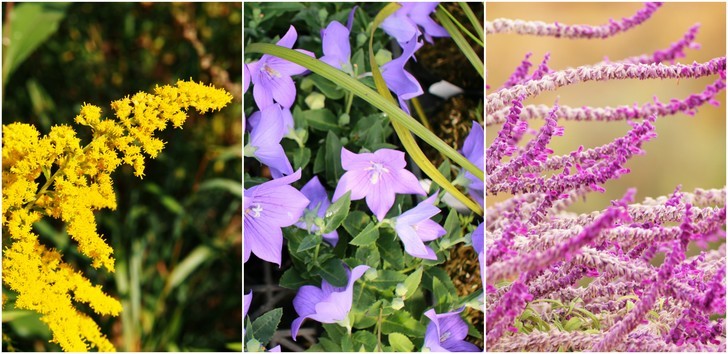
Planting perennials in the fall is a simple way to enjoy a larger, more stunning garden next spring.
While you’re probably more accustomed to planting in spring, autumn is another ideal time for getting perennials established in your garden.
By purchasing blooming perennials in the fall, you’ll get kind of a two-for-one deal, enjoying the flowering perennials in the autumn, and then again through the spring and summer months, and for many more years to come.
Plus, it’s actually easier to plant this season as fall weather tends to be less sporadic in most places, with air temperatures generally more consistent and warmer, while the sun is less intense, as compared to the spring, when you might experience a hard freeze or an occasional snowstorm, or, on the opposite end of the spectrum, hot summer-like weather.
Plus, if you’ve done a decent job at keeping up with the weeds this summer, you won’t have to worry about your autumn-planted perennials having to compete with new upstarts, and those early-season bloomers will have the opportunity to build stronger root systems that will show up in the next year’s bloom.
To get the biggest bang for your efforts, choose and plant hardy, long-lived spring-blooming perennials, and you’ll get a great head start and something to look forward to for years without the annual fuss of replanting.
There are a few things you need to know first when it comes to planting fall perennials.
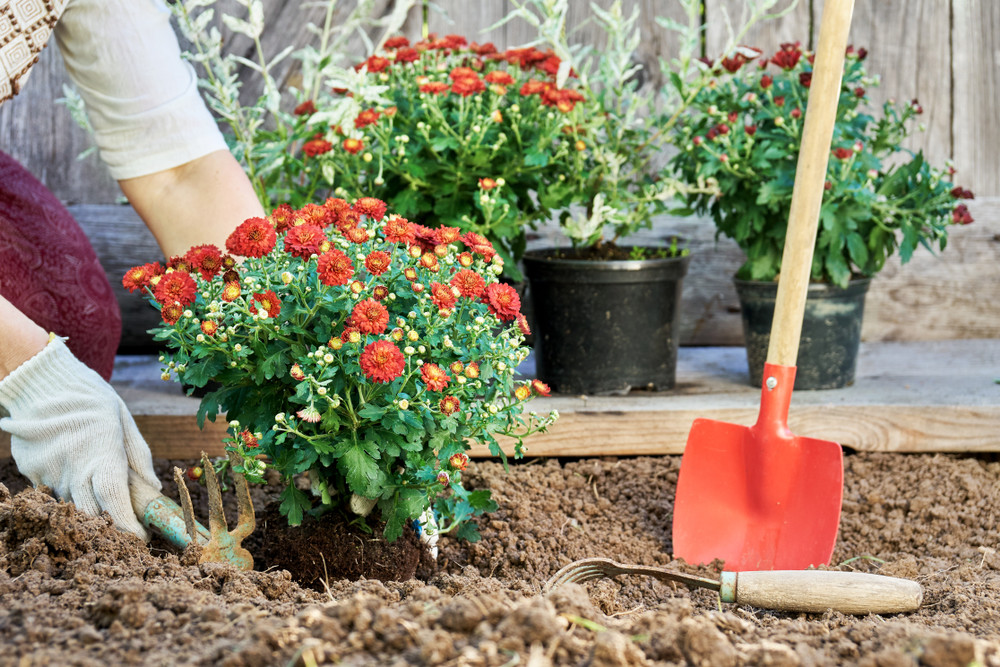
The first is simple – be sure to select plants that have a late bloom period, and that you’re certain that they’ll bloom in your region before the frost.
Before you purchase, at the end of summer, analyze where your garden is at, making observations of the past season while they’re still available, such as which areas need more ground cover, which might need more early season blooms, where to add tall plants, etc.
By giving it a good overview at the end of a year’s growth, it can help you better visualize the changes you’re considering.
The slightly more challenging aspect is that fall blooms tend to get quite tall, and once they bloom they can be very top heavy, which means they can easily tip over.
To ensure that you have a beautiful display, you may want to stake them as they grow to help keep them tall and upright or plant them in the back of a border, as the shorter plants in front can help support them.
Don’t wait until the cold winds arrive before installing transplants unless you live in zones 8 through 11, which means you can plant just about any time you’d like.
Ideally, you should plant at least six weeks before the ground is going to freeze solid.
So, ready to get planting?
9 Best Fall Perennials:
1. Goldenrod
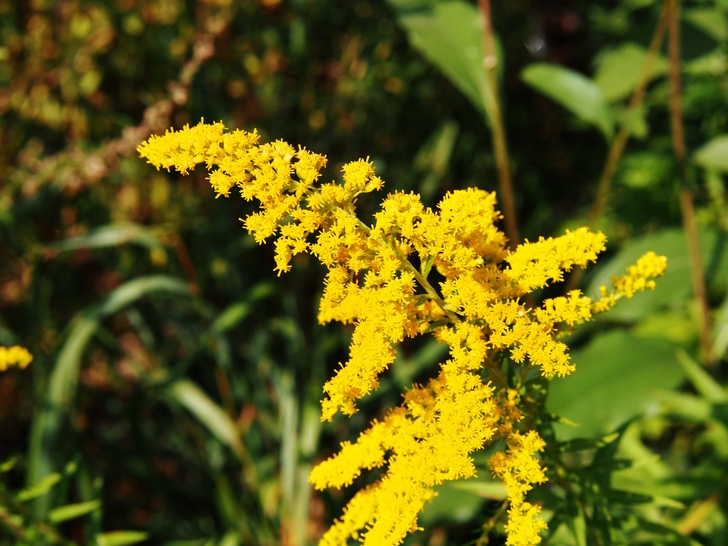
Fall can be made even lovelier with the bright, cheery yellow flowers of goldenrod.
It’s a tough, gorgeous plant that looks great despite summer heat and drought, and it isn’t typically a source of allergies – that’s actually a common misconception.
While many people, particularly allergy-sufferers, tend to avoid goldenrod with the thought that it worsens hay fever symptoms, that’s just a myth, as ragweed is the culprit, not this flower, and it’s ideal for fall planting.
It’s one of the last flowers to bloom in the fall, and most varieties grow nice and tall, making them ideal for a border, and they won’t take over your entire garden.
2. Japanese anemones
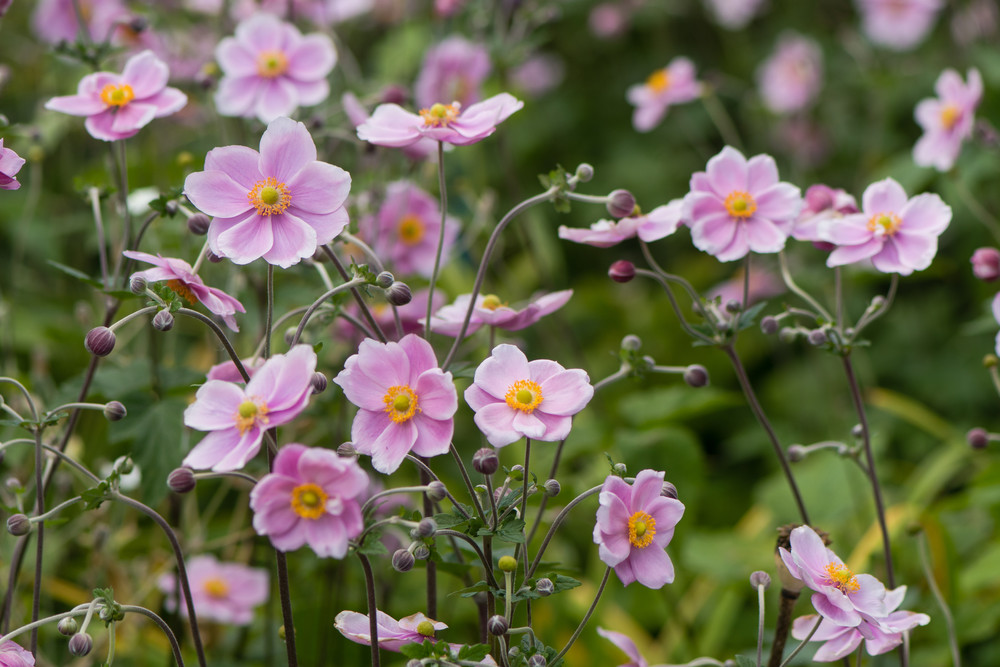
These flowers are standards in most billowing perennial borders. They start to bloom in late summer and go all the way through frost.
They also bring a refined look to an autumn landscape, with the delicate flowers bursting open atop the willowy stems of the plant, while the pink and white blossoms illuminate a shady garden, particularly around sunset, with the warm light touching the branches of nearby trees.
While Japanese anemones take several years to become established, once they do, they require very little maintenance.
As the petals fall to the ground, they leave behind a seed head, and newly opened blossoms mingle among them, putting on a gorgeous display which generally lasts for several weeks.
3. Chrysanthemums

Chrysanthemums, or mums as they’re often called, are the quintessential representation of fall, well, mums and pumpkins anyway.
There is a wide range of varieties of the plant, and they aren’t as expensive as many perennials either, so they can be a great option for those on a tight budget.
If you’re an impulse buyer, you’ll probably see pots of colorful mums this fall and not be able to resist.
Many are purchased only for a brief burst of color in September and October to announce the coming of the new season, but with the right care, your perennial mum can provide fall color year after year.
The key is to get them into the ground as soon as you can and keep them watered well. Once the ground freezes, add mulch, and you’ll have the best chance for hardy, thriving mums.
To avoid wilting, check the soil every day.
If it’s dry, water thoroughly. Depending on the weather, they may require a daily drink.
4. Balloon Flower
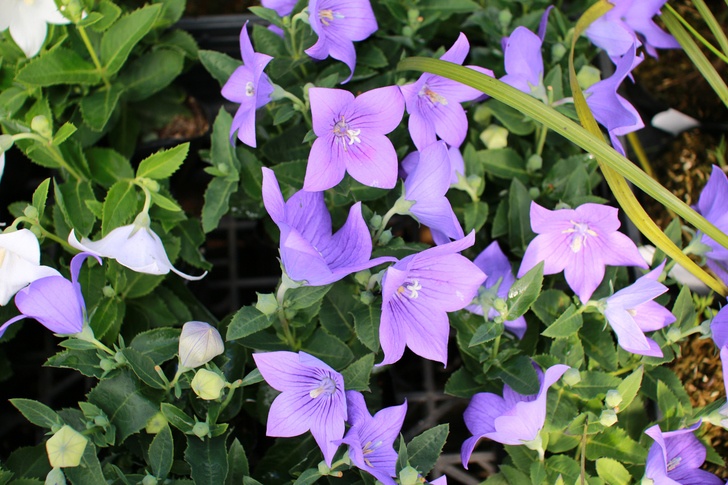
The balloon flower is a late bloomer, not flowering until late summer, but continuing well into autumn.
It’s part of the bellflower or campanula family, but its flowers are more dramatic, starting off as kind of a “puff,” and then bursting open when they’re ready to bloom, in white, pale pink or lavender-blue.
They spread slowly, and fill in without becoming a nuisance and require very little maintenance.
As the white and pink types tend to be paler than many fall blooming flowers, you’ll want to carefully think about where you tuck them in.
They’re ideal near spiky plants, such as liatris and persicaria, as well as ornamental grasses.
5. Pineapple Sage
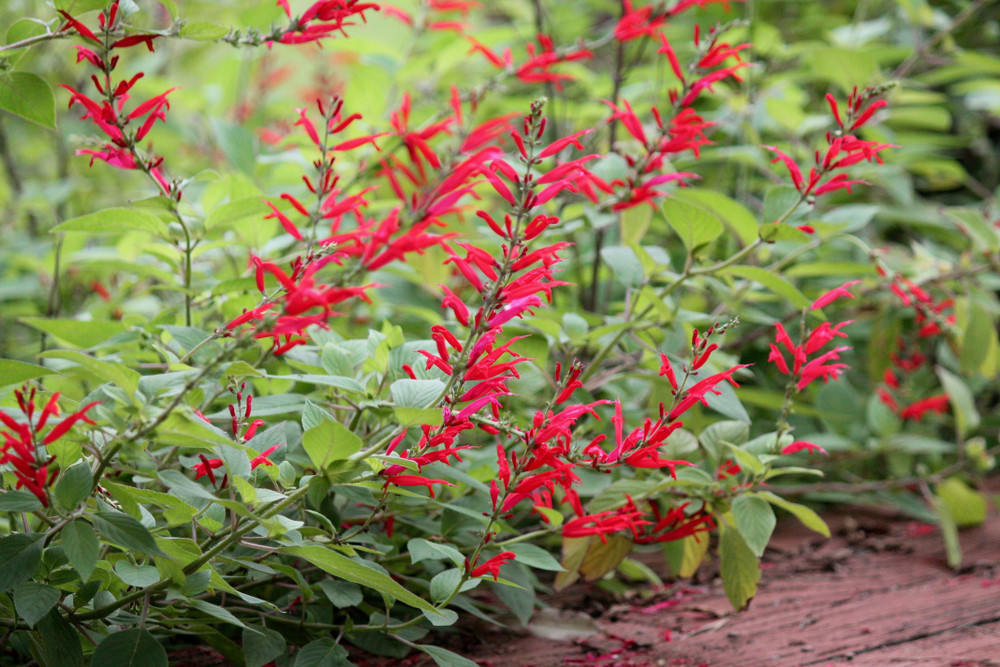
Pineapple sage is at its best in the autumn, when it sends up spectacular spikes of vibrant red flowers, and puts off an aroma similar to ripe pineapples.
It’s a wonderful seasonal treat that brings a sense of anticipation for the end of summer and will grow into a 3-4ft tall plant, and nearly as wide by the time the fire-engine red flowers bloom.
The blooms come just in time to refuel butterflies and hummingbirds during their fall migration, and if you live in a place that doesn’t freeze, you may get to enjoy the blooms through winter, and possibly all year long.
6. Mexican Sage
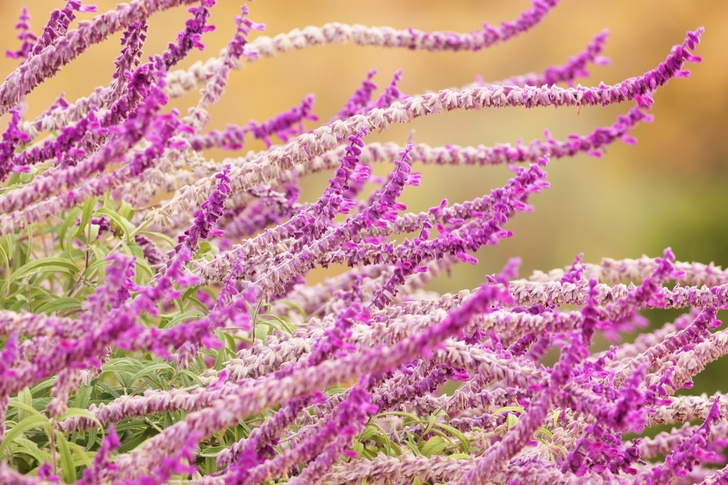
Mexican sage, or salvia leucantha, are both tough and beautiful, and a perfect choice for ending the summer season, thanks to the velvety purple flower spikes and downy stems, produced from late summer to frost.
It grows 3 feet tall by 3 feet wide and is ideal for a garden border.
It’s also one of the showiest plants for containers, annual borders, and mixed borders – and, both hummingbirds and butterflies love them.
They do well in partial shade to full sun and need moist but well-drained soil.
7. Sneezeweed
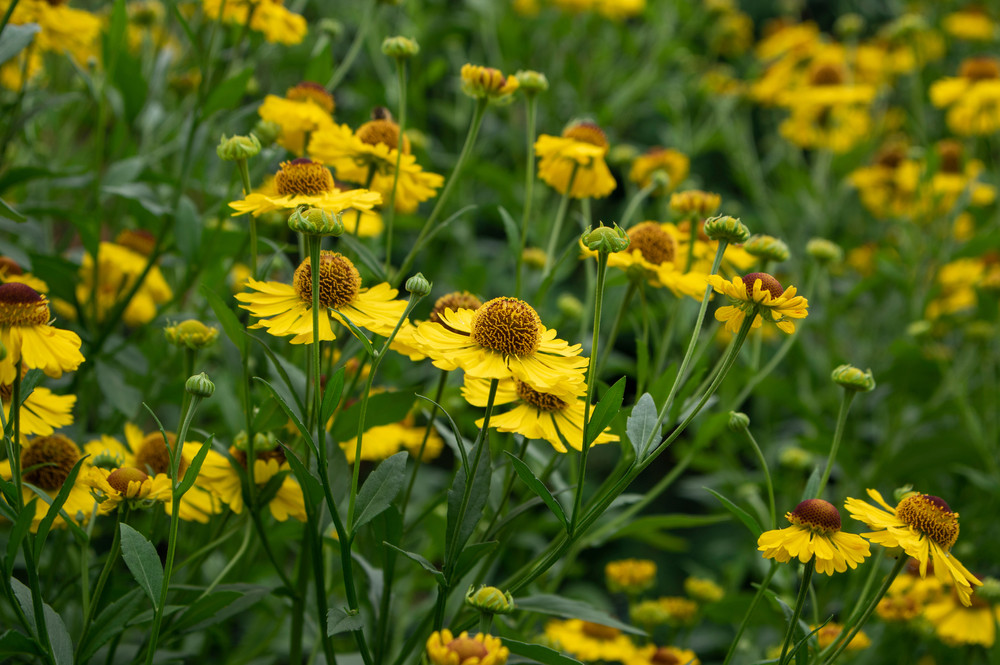
Native to North and Central America, sneezeweed, or helenium, is an ideal perennial for a late season garden as it will bring you splashes of color for weeks, lasting through early fall, even when all your other flowers are fading.
Its daisy-like flowers come in a wide array of colors, from pale yellow to dark red, while the showy petals surround a brown cone covered with pollen to attract butterflies.
The reason it’s called sneezeweed is that in ancient times its leaves were dried and used to make snuff that was inhaled to encourage sneezing to get rid of “evil spirits.”
Fortunately, allergy sufferers need not worry about planting it, as the name only refers to this long-lost use, and the only creatures apt to be affected by the blooms of it are the butterflies that seek out this late flowering plant.
Paired with other late-bloomers, and planted in groups of three to five will create a spectacular effect in your garden.
8. Bee Balm

Bee balm, or monarda, is one of the showiest perennials, with its distinctive spiky blooms drawing not only bees but hummingbirds and butterflies.
It grows in an extensive variety of colors, including everything from white, delicate pinks and soft lavender to flashy reds and vivid violets.
Plus, the foliage of all bee balm sends out a pleasing aroma too.
Garden bee balm, similar to its wild cousin, blooms in bunches of tube-shaped flowers, some in multiple bunches along one stem, followed by seeds in fall and globular seed heads that provide winter interest.
It’s best to sow the seeds in the ground in mid-autumn, after the threat of hot, dry, windy weather.
Doing so will bring some beautiful green leaves before fading in the winter.
9. Autumn Joy
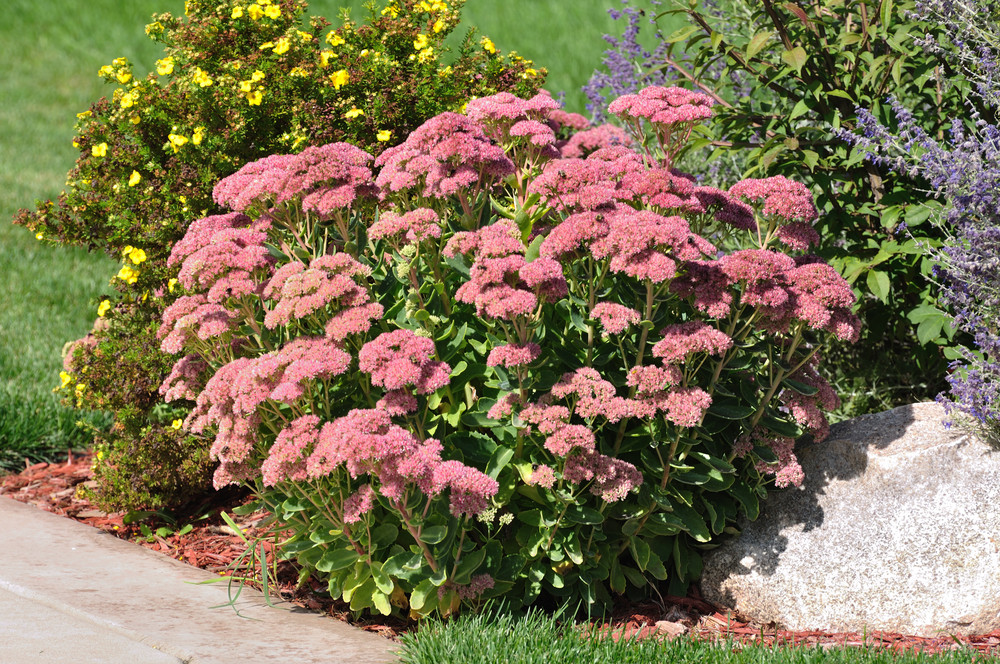
The very aptly named “autumn joy,” also known as sedum, is not surprisingly, ideal for fall, and it looks great all year round too, requiring minimal attention and experience few if any issues.
This one is about as dependable and as adaptable as a plant can be, with flowers blooming from late summer all the way into November, opening up pink and maturing to copper.
The plants look fantastic against ornamental grasses.
